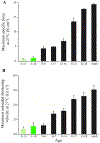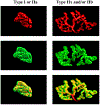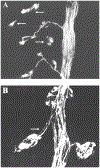Evolution and Functional Differentiation of the Diaphragm Muscle of Mammals
- PMID: 30873594
- PMCID: PMC7082849
- DOI: 10.1002/cphy.c180012
Evolution and Functional Differentiation of the Diaphragm Muscle of Mammals
Abstract
Symmorphosis is a concept of economy of biological design, whereby structural properties are matched to functional demands. According to symmorphosis, biological structures are never over designed to exceed functional demands. Based on this concept, the evolution of the diaphragm muscle (DIAm) in mammals is a tale of two structures, a membrane that separates and partitions the primitive coelomic cavity into separate abdominal and thoracic cavities and a muscle that serves as a pump to generate intra-abdominal (Pab ) and intrathoracic (Pth ) pressures. The DIAm partition evolved in reptiles from folds of the pleural and peritoneal membranes that was driven by the biological advantage of separating organs in the larger coelomic cavity into separate thoracic and abdominal cavities, especially with the evolution of aspiration breathing. The DIAm pump evolved from the advantage afforded by more effective generation of both a negative Pth for ventilation of the lungs and a positive Pab for venous return of blood to the heart and expulsive behaviors such as airway clearance, defecation, micturition, and child birth. © 2019 American Physiological Society. Compr Physiol 9:715-766, 2019.
Copyright © 2019 American Physiological Society. All rights reserved.
Figures
























References
-
- Introduction to Pulmonary Structure & Mechanics, in Ganong’s Review of Medical Physiology, Barrett KE, et al., Editors. 2018, McGraw-hill: New York.
-
- Aaron EA and Powell FL, Effect of chronic hypoxia on hypoxic ventilatory response in awake rats. J Appl Physiol (1985), 1993. 74(4): p. 1635–40. - PubMed
-
- Abe T, Kieser TM, Tomita T, and Easton PA, Respiratory muscle function during emesis in awake canines. J Appl Physiol (1985), 1994. 76(6): p. 2552–60. - PubMed
-
- Abe T, Kusuhara N, Katagiri H, Tomita T, and Easton PA, Differential function of the costal and crural diaphragm during emesis in canines. Respir Physiol, 1993. 91(2–3): p. 183–93. - PubMed
Publication types
MeSH terms
Grants and funding
LinkOut - more resources
Full Text Sources

